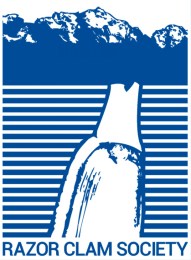Safety Tips for Taking a Socially-Distant Adventure in Your Nearby Woods
By Jason Lewis
Image via Pexels
The COVID-19 pandemic has turned the routines of millions of Americans upside down. One significant way it has done this is through governmental orders to stay at home.
While abiding by social distancing guidelines is critical to stopping the spread of COVID-19, being quarantined indoors for months on end can raise significant physical, mental, and emotional health concerns. In short, people need to spend time outdoors. And besides the backyard, the nearby woods is the only option for most families across the country. This means recreational activities like hiking, camping, and mountain biking are a saving grace. If you’re new to one or all of these activities, consider this advice for staying safe and enjoying your time.
Hiking
As with the other activities listed here, it’s important to have the right equipment when you go hiking. Be sure to bring plenty of water and food, the right clothes, a compass, and a map, and research any other items you might want to bring.
Before you head out, research the area where you will be hiking, especially if you don’t know much about local poisonous plants, wild animals, and hunting zones. Also, try to schedule your hikes during the day, look at the weather forecast, and remember to stay together, especially if you have young children. Nothing can ruin a nice, refreshing hike like losing sight of your kids.
Camping
You will need many of the same essentials for camping as you would for hiking. However, there are some camping-specific items that can make your venture safer and more enjoyable. For example, a quality headlamp can allow you to see better at night and perform tasks with both hands. With headlamps, it’s important to find one that is waterproof, bright, and comfortable to wear. It’s also important to get a reliable tent, sleeping bags, first-aid kit, and cooler.
If your family goes camping, be sure to stay hydrated and inform yourself of any poisonous plants and potentially dangerous animals. Keep your campsite clean so that it doesn’t attract unwanted guests (e.g., bears, raccoons, etc.), and never leave a fire burning without someone there to watch it. You’ll also want to confirm local rules and regulations as many areas restrict fires at 2500 feet and above. Moreover, if you plan on using a propane stove, be sure to follow all the general safety guidelines. For example, only run the propane when you are lighting the stove, and make sure you know how the ignition switch works.
Mountain Biking
Along with getting the right kind of bikes for each family member, you want to make sure everyone has the protection they need. Depending on the age of your kids, this may mean investing in helmets, elbow/knee pads, and other protective gear. Generally speaking, adults and kids alike should always wear a helmet.
If your kids are fairly new to riding bikes, wait until they have a firm grasp on the basic skills and knowledge required. And when you do decide to take them along, ride on any trails you’re considering taking them on beforehand so that you know the terrain. This will help you determine which trails are good for your children and which ones are too difficult.
These days, venturing into your nearby wooded areas is really the only option when it comes to vacation and leisure time away from home. Consider going hiking, camping, and/or mountain biking, and do your research to make sure you have all the gear you need and that you take all the necessary safety precautions. In no time, your entire family will be experiencing the wide array of benefits that come with spending time in the great outdoors.
Jason Lewis is a personal trainer, who specializes in helping senior citizens stay fit and healthy. He is also the primary caretaker of his mom after her surgery. He created StrongWell.org and enjoys curating fitness programs that cater to the needs of people over 65.
